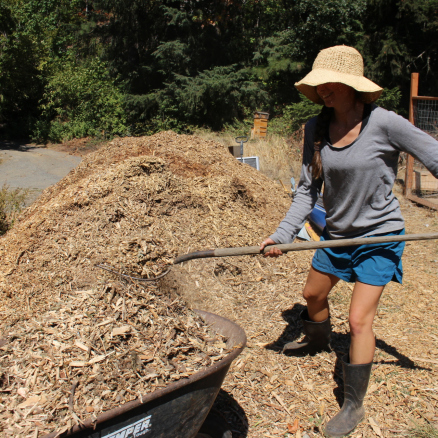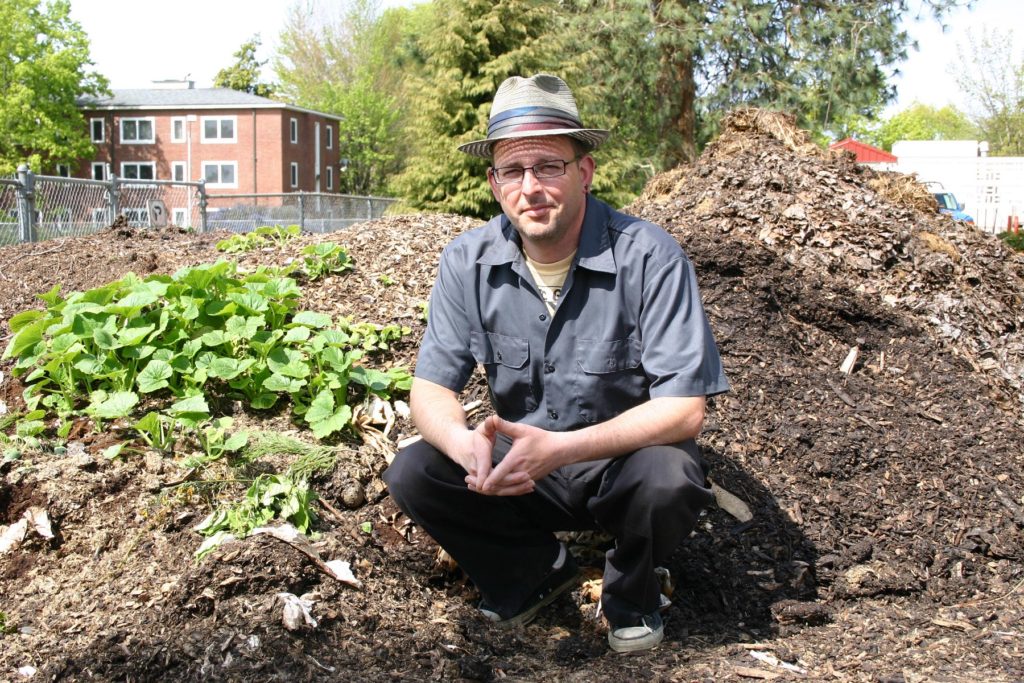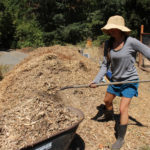The leaves rustle in the wind, the gold and fire-red hues dance around and dazzle us before falling back to Earth, oh so delicately. Attention shifts from swimming and sun tanning to drinking mugs of hot tea after a day searching for the perfect carving pumpkin. Yes, this is the glorious season of Autumn. To the surprise of many, it’s also one of the most important times of year for the garden! If we are to manage the land (and our time) strategically, we must capture the benefits of rain and cold and time so we can work less during the rest of the year.
Why Autumn?
Let us return to the image of leaves falling on the ground. It’s such a dazzling display of nature – and one of my favorite things to see – but it’s also the trees’ way of teaching us how to manage soils. You see, those trees are doing a few things: feeding themselves, protecting their roots from cold, winter frosts by mulching themselves heavily with their now dead and dying leaves, and providing essential habitat for the predators that will hopefully fight off invaders the following year. When we take away the tree’s leaves, we deprive the roots of their winter coats. But why in Autumn? By allowing the leaves to sit and rot for almost 2 seasons (late Autumn – early Spring) we allow the leaves to decompose which in turn adds nutrition to the soil. Mulching in autumn also disallows weeds to germinate at the rate in which weeds germinate in uncovered soil. Any clever weeds that break through the mulch layer are impressively easy to pull up. Mulch protects soil organisms from UV radiation, preserves water, helps water infiltration, and hosts many overwintering critters and insect eggs, such as salamanders, chipmunks, toads, moths, and butterflies. The list could go on..


Mulch can retain up to 70% more water in the soil than unmulched soil
Here at Fiddle, we have decided to try a few different styles of mulching. I will be covering a large area of the garden with leaf mulch, plus leaving all of my leftover annuals to decompose in the field over the winter. The rest of the beds are going to be mulched with wood chips, which is often not considered a viable annual garden mulch. The common concern with wood chips is they will tie up nitrogen in the soil, which is why we never would till them in. In my observations, the nitrogen issue only occurs at the very surface where the soil and woodchips meet. In my first year of laying down chips I simply do not direct sow seeds in the chip mulch. Laying down manure between the soil and chips also seems to give the chips extra nitrogen to break down without depleting from the soil below. Transplanting in the PNW climate is often necessary for certain plants, so it isn’t particularly inconvenient for us to not direct sow in some areas. I am also careful the first year or two to still mix in a bit of compost or worm castings into each hole I plant to ensure the plants have enough to eat. As time progresses, the chips break down and feed the soil an incredible compost tea every time it rains or is watered. The soil then becomes rich with vitamins and minerals brought up both from the chipped tree’s taproots (which is then redistributed back to surface of the soil as the chips decompose), as well as a healthy ecosystem of decomposers working hard to make nutrition available. A well mulched bed (4-6 inches) should take care of the garden for at least 5 years! Adding a few inches of woodchips every 5 years and light layer of manure each season seems like nothing when you compare it to the tillage and amendment application most conventional organic farmers perform each year.
Organic mulches also help improve the soil’s structure, drainage, and nutrient-holding capacity as they decompose.
Now’s the time to assess the garden. Make a list of what needs to be divided or replaced, and take a few snapshots on your phone as a visual reminder. Note if a plant is too big or small for a particular spot, and when you see varieties that might work better together. Fall and spring are the best times to move plants around.

